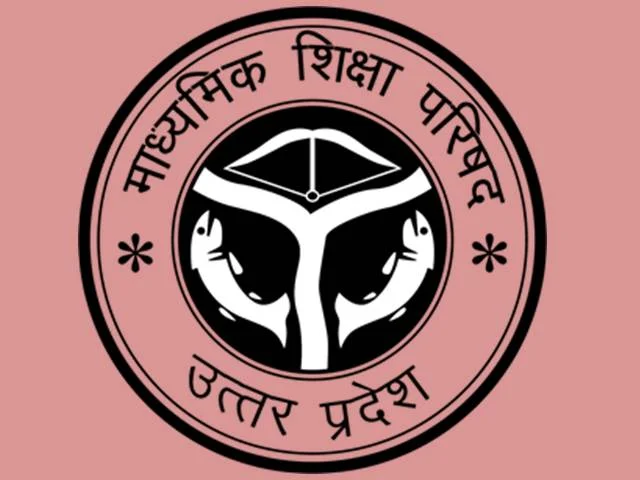CBSE Class 11 Biology Syllabus 2024-25

Biology of class 11th level is pretty important for the candidates preparing for the medical entrance exams. Topics that are included in Biology syllabus of class 11 forms a major part of the questions asked in the NEET exam. Categorized in 6 different units, the syllabus id designed in a way that it promote understanding of basic principles of Biology and also enhance awareness about environmental issues, problems and their appropriate solutions. Complete information regarding CBSE Class 11 Biology Syllabus 2024-25 can be found through this post.
Biology Syllabus for Class 11 CBSE 2024-25
Check below the details of the CBSE Class 11 syllabus and all the important topics covered in the syllabus from below. Please find below the class 11 Biology syllabus:
CBSE Class 11 2024-25 Syllabus Marking Scheme
| Unit | Title | Marks |
| I | Diversity of Living Organisms | 15 |
| II | Structural Organization in Plants and Animals | 10 |
| III | Cell: Structure and Function | 15 |
| IV | Plant Physiology | 12 |
| V | Human Physiology | 18 |
| Total | 70 |
Unit-I Diversity of Living Organisms
Chapter-1: The Living World
Biodiversity; Need for classification; three domains of life; taxonomy and systematics; concept of species and taxonomical hierarchy; binomial nomenclature
Chapter-2: Biological Classification
Five kingdom classification; Salient features and classification of Monera, Protista and Fungi into major groups; Lichens, Viruses and Viroids.
Chapter-3: Plant Kingdom
Classification of plants into major groups; Salient and distinguishing features and a few examples of Algae, Bryophyta, Pteridophyta, Gymnospermae (Topics excluded – Angiosperms, Plant Life Cycle and Alternation of Generations)
Chapter-4: Animal Kingdom
Salient features and classification of animals, non-chordates up to phyla level and chordates up to class level (salient features and at a few examples of each category).
(No live animals or specimen should be displayed.)
Unit-II Structural Organization in Animals and Plant Chapter-5: Morphology of Flowering Plants
Morphology of different parts of flowering plants: root, stem, leaf, inflorescence, flower, fruit and seed. Description of family Solanaceae
Chapter-6: Anatomy of Flowering Plants
Anatomy and functions of tissue systems in dicots and monocots.
Chapter-7: Structural Organisation in Animals
Morphology, Anatomy and functions of different systems (digestive, circulatory,respiratory, nervous and reproductive) of frog.
Unit-III Cell: Structure and Function Chapter-8: Cell-The Unit of Life
Cell theory and cell as the basic unit of life, structure of prokaryotic and eukaryotic cells; Plant cell and animal cell; cell envelope; cell membrane, cell wall; cell organelles – structure and function; endomembrane system, endoplasmic reticulum, golgi bodies, lysosomes, vacuoles, mitochondria, ribosomes, plastids, microbodies; cytoskeleton, cilia, flagella, centrioles (ultrastructure and function); nucleus.
Chapter-9: Biomolecules
Chemical constituents of living cells: biomolecules, structure and function of proteins, carbohydrates, lipids, nucleic acids; Enzyme – types, properties, enzyme action. (Topics excluded: Nature of Bond Linking Monomers in a Polymer, Dynamic State of Body Constituents
- Concept of Metabolism, Metabolic Basis of Living, The Living State)
Chapter-10: Cell Cycle and Cell Division
Cell cycle, mitosis, meiosis and their significance
Unit-IV Plant Physiology Chapter-13: Photosynthesis in Higher Plants
Photosynthesis as a means of autotrophic nutrition; site of photosynthesis, pigments involved in photosynthesis (elementary idea); photochemical and biosynthetic phases of photosynthesis; cyclic and non-cyclic photophosphorylation; chemiosmotic hypothesis; photorespiration; C3 and C4 pathways; factors affecting photosynthesis.
Chapter-14: Respiration in Plants
Exchange of gases; cellular respiration – glycolysis, fermentation (anaerobic), TCA cycle and electron transport system (aerobic); energy relations – number of ATP molecules generated; amphibolic pathways; respiratory quotient.
Chapter-15: Plant – Growth and Development
Seed germination; phases of plant growth and plant growth rate; conditions of growth; differentiation, dedifferentiation and redifferentiation; sequence of developmental processes in a plant cell; growth regulators – auxin, gibberellin, cytokinin, ethylene, ABA;
Unit-V Human Physiology Chapter-17: Breathing and Exchange of Gases
Respiratory organs in animals (recall only); Respiratory system in humans; mechanism of breathing and its regulation in humans – exchange of gases, transport of gases and regulation of respiration, respiratory volume; disorders related to respiration – asthma, emphysema, occupational respiratory disorders.
Chapter-18: Body Fluids and Circulation
Composition of blood, blood groups, coagulation of blood; composition of lymph and its function; human circulatory system – Structure of human heart and blood vessels; cardiac cycle, cardiac output, ECG; double circulation; regulation of cardiac activity; disorders of circulatory system – hypertension, coronary artery disease, angina pectoris, heart failure.
Chapter-19: Excretory Products and their Elimination
Modes of excretion – ammonotelism, ureotelism, uricotelism; human excretory system – structure and function; urine formation, osmoregulation; regulation of kidney function – renin – angiotensin, atrial natriuretic factor, ADH and diabetes insipidus; role of other organs in excretion; disorders – uremia, renal failure, renal calculi, nephritis; dialysis and artificial kidney, kidney transplant.
Chapter-20: Locomotion and Movement
Types of movement – ciliary, flagellar, muscular; skeletal muscle, contractile proteins and muscle contraction; skeletal system and its functions; joints; disorders of muscular and skeletal systems – myasthenia gravis, tetany, muscular dystrophy, arthritis, osteoporosis, gout.
Chapter-21: Neural Control and Coordination
Neuron and nerves; Nervous system in humans – central nervous system; peripheral nervous system and visceral nervous system; generation and conduction of nerve impulse
Chapter-22: Chemical Coordination and Integration
Endocrine glands and hormones; human endocrine system – hypothalamus, pituitary, pineal, thyroid, parathyroid, adrenal, pancreas, gonads; mechanism of hormone action (elementary idea); role of hormones as messengers and regulators, hypo – and hyperactivity and related disorders; dwarfism, acromegaly, cretinism, goiter, exophthalmic goitre, diabetes, Addison’s disease.
Note: Diseases related to all the human physiological systems to be taught in brief.
List of Practicals
Time: 03 Hours Max. Marks: 30
| Evaluation Scheme | Marks | |
| One Major Experiment Part A (Experiment No- 1,3,7,8) | 5 Marks | |
| One Minor Experiment Part A (Experiment No- 6,9,10,11,12,13) | 4 Marks | |
| Slide Preparation Part A (Experiment No- 2,4,5) | 5 Marks | |
| Spotting Part B | 7 Marks | |
| Practical Record + Viva Voce | (Credit to the students’ work over theacademic session may be given) | 4 Marks |
| Project Record + Viva Voce | 5 Marks | |
| Total | 30Marks |
New Biology Syllabus for Class 11 CBSE PDF: Download
Also Check: CBSE Class 11th Syllabus



JAI SHREE RAM
It’s a large syllabus that’s not easy to study for a student of eleventh standard.
reduce the syllabus please . students cant read so much in one subject itself
ask it in cbse website
Reduce the syllabus of all the subject
Yes write
It is not a good syllabus
Reduced it